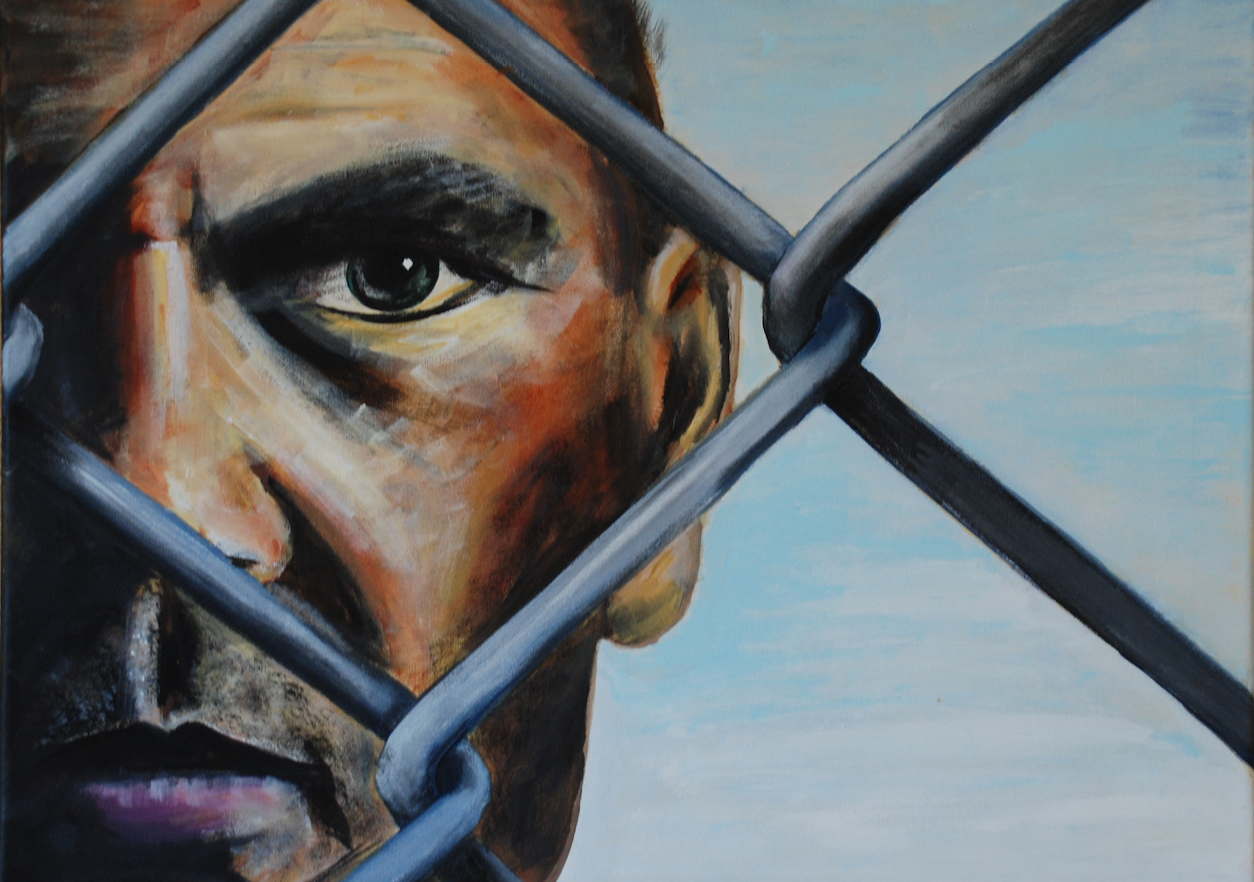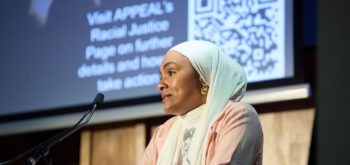Calling on research into the use of the term ‘miscarriage of justice’ in the media from 1992 to 2007, Brian Thornton tracks how dramatically its meaning has transformed. Once a bugle among left-wing newspapers for justice for those wrongly convicted, the creation of the CCRC heralded new and troubling uses of ‘miscarriage of justice’ as a dog-whistle for the guilty.
 A few years ago a national newspaper ran a high-profile campaign against injustice. As part of the campaign, readers were asked:
A few years ago a national newspaper ran a high-profile campaign against injustice. As part of the campaign, readers were asked:
‘Do you know about a miscarriage of justice? Call us.’
Readers were assured that the paper would investigate these cases because enough was enough, this injustice had to stop. A remarkable example of public interest journalism? Not quite.
The newspaper behind the campaign was The Sun, and it wasn’t actually looking for innocent people at all. What it wanted was to find the guilty. Confused? Well, over the last 20 years what the public sees as a miscarriage of justice has changed dramatically. The process began after the creation of the CCRC but really took hold when a prime minister sanctioned a remarkable land grab by the rightwing press.
- This is an edited version of a longer article that appears in Proof magazine issue 4 out today. The theme of that issue is the prisons crisis.
- Buy Proof here
Before 1997, the C3 department of the Home Office was responsible for considering and investigating claims of innocence. For newspapers and the broadcast media, this meant that any investigation or campaign had a particular target: the home secretary. There had been a greater interest among journalists and editors in miscarriages during the years of the C3 department because it regularly exercised a powerful influence on the home secretary’s decision-making.
This influence was greatly diminished after the creation of the CCRC, something welcomed by supporters of the commission. Former CCRC chair Richard Foster claimed that the exclusion of the press was entirely consistent with the body’s founding principle of neutrality. In his view, the CCRC was not in the business of campaigning, and would remain entirely unmoved by any lobbying or campaigning by the media or anyone else.
Foster’s view echoed the approach taken by the main architect of the CCRC, Lord Runciman. The chair of the royal commission that created the CCRC believed that this ‘trade-off’ was ultimately to be welcomed, saying:
‘I would be very disappointed to be told that there were still people in the media who were sufficiently confident that the CCRC was not doing a good job that they thought it worthwhile to mount a whole long expensive investigation of their own into a suspected miscarriage of justice.’
What this structural change meant in practice was that miscarriages of justice became a lot less appealing to journalists and editors after 1997. This argument is supported by investigative journalist David Jessel, who has a unique insight into both sides. He was the presenter of Rough Justice and Trial and Error in the 1980s and 1990s, and later went on to be a commissioner at the CCRC for 10 years. He explained:
‘The wonderful powers they had, what could we do as journalists? Mostly we were just re-interviewing witnesses and scratching our heads and trying to put two and two together. We were often quite right, luckily, but I really felt we couldn’t compete against the CCRC with all its firepower and I thought the writing was on the wall for television.’
With journalists like Jessel leaving the field, investigations into claims of innocence were no longer played out in public but were instead hidden for many years in the opaque offices of the CCRC. Whenever anyone raised a case in public, politicians and officials had a ready answer: ‘We cannot discuss the case because it is the subject of an investigation by the CCRC.’
Because the investigations took place under conditions of total secrecy over many years, there was no way for the media to get involved. Journalists were completely stymied. But the press’s silence on miscarriages of justice didn’t create a vacuum as you might expect because some politicians and sections of the media seized the opportunity. They shrewdly recognized that ‘miscarriage of justice’ was far too potent a phrase to be left to fall into disuse.
With the campaigners and investigative journalists silenced, the situation was now ripe for the creation of a new narrative that de-emphasised innocence and instead focused on guilt. There’s no more clear-cut example of this transformation than then prime minister Tony Blair’s 2002 speech:
‘It’s a miscarriage of justice when the police see their hard work and bravery thrown away by courts who let a mugger out on bail for the seventh or eighth time to offend again; or when courts don’t have the secure places to put people. And it’s perhaps the biggest miscarriage of justice in today’s system when the guilty walk away unpunished.’
When Blair said that miscarriages of justice occurred when the guilty went unpunished he was speaking in a post-crisis, post-reform context – at least from his perspective. Underlying his argument was an implicit narrative: the media’s reporting of high profile miscarriages had created a crisis of confidence, the politicians had responded with structural reform, and now the crisis had dissipated.
Essentially, he was claiming that the ‘innocence crisis’ had been resolved and energies should now be focused on other areas where the criminal justice was misfiring, namely, in the effective punishment of the guilty. An analysis of national newspapers of this period shows how this new agenda – punishing the guilty – successfully annexed the phrase ‘miscarriages of justice’.
The study looked at coverage over 15 years (1992-2007) in 17 papers: The Daily Mail, The Mail on Sunday, The Daily Mirror, The Sunday Mirror, The Daily Telegraph, The Sunday Telegraph, The Express, The Express on Sunday, The Guardian, The Observer, The Independent, The Independent on Sunday, The News of the World, The People, The Sun, The Times andThe Sunday Times. The newspapers were searched for the term ‘miscarriage of justice’ and a total of 513 articles were found.
In the five years preceding the creation of the CCRC (1992-97), the most prolific newspaper in terms of miscarriage of justice stories was The Guardian. The paper ran 68 stories in five years – more than all the stories in The Sun, Telegraph, Daily Mirror, Sunday Mirror, Express, Independent on Sunday, News of the World, Observer, The People, Sunday Times, Daily Mail, Mail on Sunday, Express on Sunday and Sunday Telegraph.
Three newspapers – The Times, The Guardian and The Independent– were by far the predominant sources of stories related to miscarriages. Before 1997, these three papers ran 148 miscarriage stories, which was 78% of the total. But in the five years following the creation of the CCRC (1997-2002), all three papers recorded dramatic falls in their coverage of the issue (Guardian -63%, Independent -26%, Times -18%).
These represented huge falls, but the total number of stories written about miscarriages in this period only fell slightly – so what was happening? An analysis of the figures shows an interesting trend. Newspapers that had shown moderate or no interest in the subject in the five years before 1997 had started to write a significant number of miscarriage articles after 1997. There was a 373% increase in the number of miscarriage of justice stories appearing in The Sun, The Daily Mirror, Express and Daily Mail after 1997.
In the tabloids, the number of miscarriage stories increased by 265% during this period. But a similar trend had happened, in reverse, to the broadsheets. The number of miscarriage stories in broadsheets fell by 35% after 1997. For example, The Guardian’s coverage of miscarriage stories reduced by 63%, while The Sun’s coverage had increased by 900%.
The decline in coverage of miscarriages in the left wing press has been dramatic. Before the creation of the CCRC (1992-97) the left wing press published 138 articles but after the creation of the CCRC (2002-07) these newspapers (Guardian, Independent, Mirror, Independent on Sunday, Observer, Sunday Mirror) only published 73 articles, a 47% drop. But completely the opposite trend was happening in the right wing press. These newspapers (Times, Sunday Times, Mail, People, News of the World, Mail on Sunday, Sun, Telegraph, Express, Express on Sunday, Sunday Telegraph) only published 53 stories about miscarriages between 1992-97 but between 2002-07 they featured 84 articles, a 59% increase.
An examination of the articles written by the right wing press after the CCRC was created reveals that 22 of them (26%) are not about innocence at all, but instead about guilt. The coverage by The Sun in this period illustrates the point. The paper featured 13 stories about miscarriages of justice in the period 2002-07, but eight of them (62%) were about guilt:
- New war on killer motorists,The Sun, 11 September 2006
- Outrage as Beeb backs Jill killer, The Sun, 5 September 2006
- Paedo chaos, The Sun Charter for Justice,The Sun, 11July 2006
- New ‘not proven’ court verdict, The Sun, 20 April 2006
- Tony Martin is still in jail, The Sun, 21 January 2003
- Storm as dad gets 5 yrs for killing raider, The Sun, 19 October 2002
- Five years for killing raider, The Sun, 18 October 2002
- Horror sex attack by a freed rapist, The Sun, 3 June 2002
Another two of The Sun’s stories featured people who were maintaining their innocence, but their claim was framed in a very negative light:
- King: I’m like Jesus, The Sun, 30 December 2005 (‘Child sex pervert Jonathan King has compared himself to Jesus on his sick website.’)
- Alex best visits paedo ex in jail, The Sun,12 September 2005 (‘Telly beauty Alex Best has been making secret visits to see paedophile businessman Howard Kruger in jail, The Suncan reveal.’)
It meant that of the 13 stories that The Sun featured between 2002-07, ten of them (77%) actually dismissed or undermined the concept of innocence. The significance of a right wing discourse on miscarriages of justice can only really be appreciated when one recalls how utterly dominant the right is in the UK media. Research has found that only 15% of all newspaper circulation in the UK could be considered left-leaning.
 Blair’s intervention in 2002, in which he offered up a new definition of a miscarriage of justice, was very much in keeping with this new trend but went even further than what the right wing press was suggesting at the time. But it didn’t take them long to catch up. The Mailwas one of the first to embrace the new approach:
Blair’s intervention in 2002, in which he offered up a new definition of a miscarriage of justice, was very much in keeping with this new trend but went even further than what the right wing press was suggesting at the time. But it didn’t take them long to catch up. The Mailwas one of the first to embrace the new approach:
Rapist freed as ‘no danger’ struck again, Daily Mail, 3 June 2002. A serial rapist freed early by judges because he was ‘not a long-term danger to women’ subjected another woman to a horrific sex ordeal. A senior police officer called the decision to speed his release: ‘A travesty, a real miscarriage of justice’.
This was Blair’s new definition in practice: the early release of a rapist (the guilty unpunished) characterised as ‘a miscarriage of justice’. This new definition proved very popular with the right wing press. For example, there were no stories in The Expressabout miscarriages between 1992-97 when the phrase emphasized the concept of innocence but the new calibration was much more conducive to the paper’s agenda:
The law must see we are shielded from murderers, The Express, 20 September 2004. (‘How does Lord Woolf, the Lord Chief Justice, react to this terrible spate of killings across the country? He announces that some murderers should serve a term of just seven years. These proposals represent not only a monstrous miscarriage of justice but a risk of allowing dangerous people out into the community.’)
Crackdown on legal loopholes that let the guilty escape justice, The Express, 20 April 2006. (‘Convicted criminals may soon no longer be able to walk free just because of a legal technicality. Under radical plans to toughen up the Court of Appeal, Home Secretary Charles Clarke yesterday announced an urgent review of the legal test for quashing convictions, which will make it harder for offenders to argue a miscarriage of justice.’)
But the tabloids were not content with highlighting examples of when the guilty had gone unpunished. The Sun actually mounted high-profile campaigns aimed at ensuring that when the guilty did get caught, they were properly punished.
- Paedo chaos, The Sun Charter for Justice, The Sun, 11 July 2006. The mum whose toddler was attacked by evil pervert Craig Sweeney erupted in fury last night after the Government’s law chief refused to challenge his soft sentence.
It is at the end of this article that The Sunasks its readers:
- ‘Do you know about a miscarriage of justice? Call us.’
The narrative had developed to such an extent that The Sun did not need to explain what it meant by ‘miscarriage of justice’, because its readers already understood. They knew that the paper was looking for tales of ‘evil perverts’ and ‘crooks’ who get ‘soft sentences’ to use in its ‘Justice campaign to have lenient judges turfed out’.
But it wasn’t just concerned with paedos and crooks. The Sun also had ‘killer motorists’ in its sights:
- New war on killer motorists, The Sun, 11 September 2006. (‘In a victory for The Sun, Director of Public Prosecutions Ken Macdonald said motorists who cause death by dangerous driving must be charged with that offence, which carries up to 14 years jail. Mr Macdonald said this is a ‘miscarriage of justice’.’)
The Sun’s campaigns illustrated how far the meaning of the term had altered: miscarriages of justice weren’t about innocence any more, they were about situations when the guilty weren’t punished – or where, if they were punished, the punishment was far too lenient. It’s worth noting that research indicates that after Blair’s 2002 speech, judges were more inclined to hand out harsher sentences. Professor Mike Hough and his colleagues found that many judges felt they couldn’t sentence criminals in the way they found appropriate due to ‘social and political pressures’.
Over the last two decades, ‘miscarriage of justice’ as a concept has been appropriated by the populist right wing press and politicians. The phrase gained gravitas in the 1990s due to its repeated use in relation to cases like the Birmingham Six and Guildford Four, and it appears that papers like the Sun, Mail and Express were keen to use its potent resonance to support their agendas. Alternatives like ‘unfair’ or ‘unjust’ just didn’t have the same power or public recognition. It was an audacious rebranding exercise but you just have to look at any news outlet on any day of the week to see how devastatingly effective it has been.







